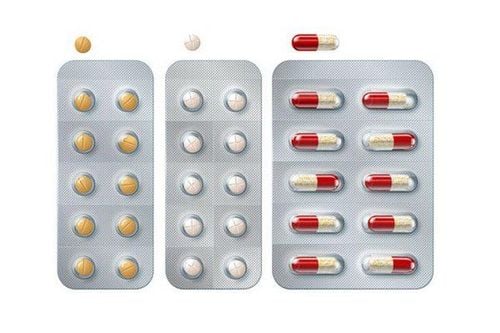This is an automatically translated article.
The article was professionally consulted with Specialist Doctor II Nguyen Quoc Viet - Department of Medical Examination & Internal Medicine - Vinmec Da Nang International General Hospital.Acute renal artery occlusion results from disruption of the normal blood supply to part or all of the kidney. Depending on the severity of the blocked renal artery, the disease can lead to hypertension, chronic kidney disease, and end-stage renal disease.
1. What is acute renal artery occlusion?
The renal artery originates from the abdominal aorta and supplies blood to the kidneys. The right renal artery supplies blood to the right kidney and similarly to the left. Blood flow to the kidneys serves to nourish the kidneys as well as to filter the blood, removing excess fluid and products of metabolism out of the body through urine.Acute renal artery occlusion is when blood flow to the kidney is obstructed, the kidneys are hypoperfused, and eventually the kidney is infarcted. Overall, this diagnosis is relatively rare and is often missed or delayed because patients present with abdominal or lower costal pain that mimic other more common conditions, such as nephrolithiasis and nephritis.
Precisely because this condition is an important cause of loss of renal function and can lead to serious cardiovascular events, renal infarction should be suspected in patients with predisposing factors for thrombosis or thrombosis. risk of atherosclerosis. At this time, diagnostic imaging tools need to be prescribed early for timely treatment to prevent permanent loss of kidney function as well as distinguish from kidney stones and pyelonephritis or other lesions. other benign kidney.

2. Causes of acute renal artery occlusion
The most common cause of renal artery occlusion leading to renal infarction is atherosclerotic plaque embolism or thromboembolism from the heart valves, ventricles, atria, or aorta.In addition, there are other causes, including:
Coagulation disorders Aortic surgery Renal artery dissection Renal artery dissection Muscle fiber dysplasia Kidney injury Vasculitis Malignant hypertension Renal vein occlusion Sometimes in Rarely, acute renal artery occlusion has also occurred in neonates with severe dehydration due to gastroenteritis and in adults with torsion of a transplanted kidney.

3. Clinical manifestations of acute renal artery occlusion
Acute renal artery occlusion causing small renal infarction is usually asymptomatic and evident in the previous history, but is only found on imaging at a later stage.If the renal artery occlusion is complete and causes a large renal infarction, the patient usually presents with acute lower costal pain and possibly hematuria and proteinuria.
Imaging tools In the past, urography with computed tomography was the mainstay method for renal imaging. Today, computed tomography of the urinary system with intravenous contrast has become the modality of choice and can allow visualization of kidney stones as well as evaluation of renal vasculature and parenchyma.
Computed tomography In patients presenting with lower quadrant pain with or without hematuria, computed tomography of the urinary tract is usually the first test ordered to differentiate from renal colic.
Computed tomography angiography can also show occluded blood vessels. In the case of trauma, it is important to evaluate the hilum hematoma because resection may be indicated. Rare cases of concomitant renal vein occlusion have been reported.
Renal infarction is most easily identified on contrast-enhanced imaging, preferably in the cortical phase during arterial phase. One or more focal, wedge-shaped parenchymal defects involving both the cortex and the medulla, extending to the renal capsule surface, are indicative of renal infarction. In the case of acute renal artery occlusion just above the main artery, the whole kidney cannot receive the contrast agent.
Ultrasound Although computed tomography is often the first indication when aiming for a diagnosis of renal infarction, ultrasonography can still be performed if the clinical presentation is ambiguous.
In such cases, acute renal infarction will present in the absence of perfusion under color Doppler evaluation, but may involve the entire kidney, or may be patchy if the renal artery is occluded on several levels. location. The absence of flow can also be seen directly in the renal artery and in rare cases venous thrombosis also causes renal infarction.
Over time, the areas of renal infarction will shrink, becoming hypoechoic scars.
Differential diagnosis It is important to distinguish renal artery occlusion causing renal infarction from other conditions such as infection (pyelonephritis). In these patients, foci of hypointensity are absent on imaging and have a variable presentation with prominent inflammatory or infectious symptoms.

4. Treatment of acute renal artery occlusion
In the case of disseminated renal infarction, the patient only needs to receive supportive management and investigate the cause of the disease.Many patients with acute renal failure will have a reflex increase in blood pressure within the first week but usually improve rapidly. Antihypertensives, especially ACE inhibitors or angiotensin receptor antagonists, may be effective.
The optimal treatment for renal artery occlusion due to thromboembolism, local thrombosis, or renal artery dissection is unclear. Reported treatments include anticoagulation, endovascular intervention (thrombolysis or thrombectomy with or without angioplasty) and open surgery.
Anticoagulation with intravenous heparin followed by oral warfarin is the standard anticoagulation regimen in this setting. The target INR can vary depending on the cause of the renal infarction, typically 2.0 - 3.0. An INR target higher than 2.5 to 3.5 may be considered if events recur despite appropriate INR maintenance or in high-risk patients, such as valvular heart disease.
When renal artery occlusion is complete, an aggressive indication for renal revascularization should be made, although results are limited, even in patients with a short ischemic duration. Thus, unless the patient has an isolated kidney or is on the verge of renal failure, most renal artery occlusions should be managed conservatively.
It should be noted that some patients after renal infarction still have living renal parenchyma but have prolonged renal artery stenosis causing secondary hypertension and may require endovascular intervention.
5. Prognosis
Prognosis after treated or untreated renal infarction is uncertain. Renal infarction mainly occurs in patients with other conditions associated with high morbidity and mortality (eg, atherosclerosis, atrial fibrillation). Accordingly, the prognosis will depend on the prognosis of lesions in other important vascular beds such as the heart and brain in general atherosclerotic cardiovascular disease.In summary, acute renal artery occlusion causing renal infarction is an easily missed disease due to its nonspecific presentation. Abdominal pain is sudden and in patients at high risk of thrombosis or atherosclerosis, the suspicion of renal infarction is high. Early diagnosis and treatment of anticoagulation is the "key" to help patients recover quickly.
Please dial HOTLINE for more information or register for an appointment HERE. Download MyVinmec app to make appointments faster and to manage your bookings easily.














